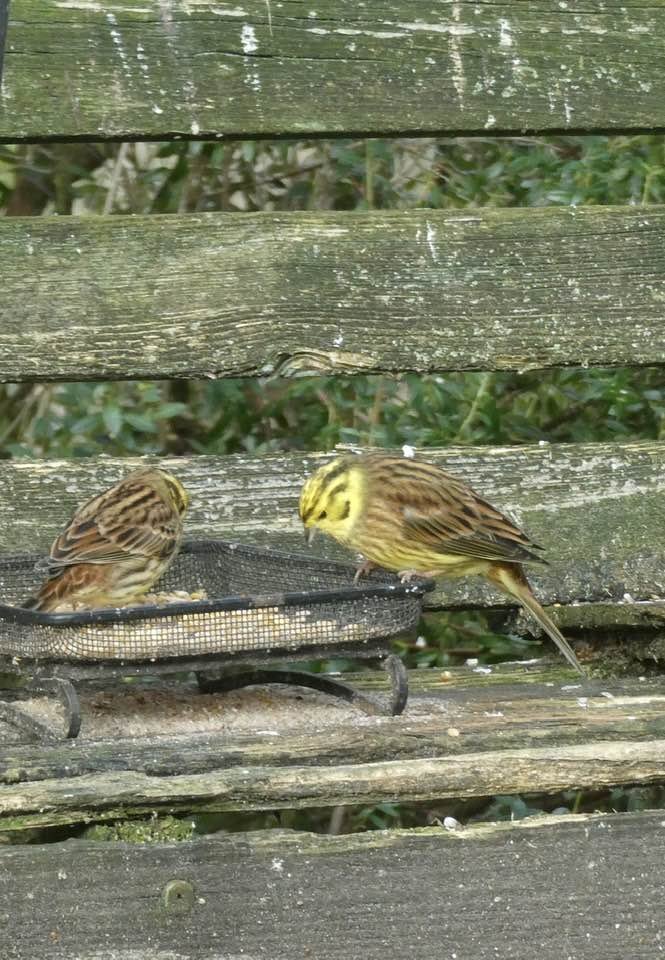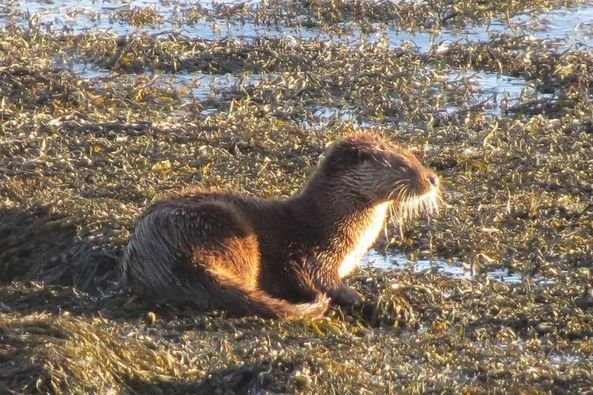Nature Notes - April 2023
/Large swathes of the United Kingdom are deep in snow as I write this, but here in the North West, although the temperatures first thing in the morning and last thing at night have been icy in this second week of March, there’s no denying the strength of the sun mid day, and the continuing sense of our world awakening once again to new life. The Spring flowers know it, many already in bloom, the swelling buds on shrubs and bushes know it, the growing chorus of birdsong proclaims it: “Pleasure it is to hear i’wis the birdes singe”. Those blooming Bullfinches that arrive on the dot each year to rob us of our small amount of blossom know it – quite how I don’t know! I love watching them nonetheless, and they are otherwise not frequent visitors. A pair of Yellowhammers, on their way elsewhere, but calling at our feeders a couple of mornings for a feed up – they know it as well. Spring may not be quite “bustin’ out all over” yet, but April, we hope, will see it putting on its fresh new dress, and how welcome that will be. The Dipper – yes, we have been seeing more of the Carron River Dipper – he knows it is Spring, too, and sang us a soft, sweet, scratchy little song as he boulder-hopped along the bank near Riverside Cottage one afternoon. That was our fourth sighting of this plump, brown little bird this year. And now, at last, I have heard a Dipper sing!
An afternoon walk in Attadale Gardens saw a few early Rhododendrons in bloom, as were the so-called Christmas Roses, a form of Hellebore, and an evergreen, a member of the Buttercup family, with pretty, drooping flower heads. There was much Finch and Tit activity, though nothing out of the ordinary. There have been no further sightings of last year’s Nuthatch. However, we were interested to learn that Jays have been spotted and heard there. Jays are brightly coloured members of the Corvid family, easily identified by their pinkish-fawn body plumage, crested head, black wing and tail feathers, and a startlingly blue flash on the wings. In flight they also display a large white patch above the black tail. Their cry is a harsh screech, once heard never forgotten. I have never seen one locally, but Ingrid reported one in the woods at Coulags last summer.
Talking of Ingrid, I must be one of many Lochcarron folk who admire her beautiful wild-life pictures, and as there must be many who don’t regularly, or ordinarily get a sighting of otters, I thought we should have one of her pictures of these sleek Mustalids enjoying a morning lounge in the morning sunshine. Duffy has also reported seeing them in this same bit of the shoreline, so it must be a favoured spot. It is good to know that throughout the British Isles otters are really making a comeback and can be seen in many places both around the coast and in our rivers – and that despite the appalling pollution suffered by some of the latter.
It would be criminal not to mention the sightings of the Aurora Borealis enjoyed by many people during March, as witnessed by the many pictures uploaded to the internet. We were particularly grateful for the latter, because although we were looking out for the phenomenon, it didn’t appear to be visible from Achintee, except for a lightening of the sky behind A’ Glas Bheinn, but nothing of any colour or movement of light. We were deeply frustrated! As lovely in its own way, though, and visible every night, is the sight of the planets Venus and Jupiter in the early night sky. I must also comment on the beautiful pictures put on by Sue Scott of the co-incidence of the Moon’s setting with the first flush of dawn light on the Cuillin of Skye. What wonderful sights we are able to enjoy here in this wild and beautiful part of the world.
We were briefly visited by what I am pretty sure was a young Kestrel one afternoon. It’s plumage was a light pinky brown, but without the distinctive markings that a female of the species would have sported. It was standing on our stone gate-post in a very upright sort of stance, but flew off before I was able to get a really good look at it in the rather grey light of that afternoon. It certainly wasn’t a Sparrowhawk, or a Peregrine Falcon, and too big for a Merlin. Kestrel, then.
Francis Minay


